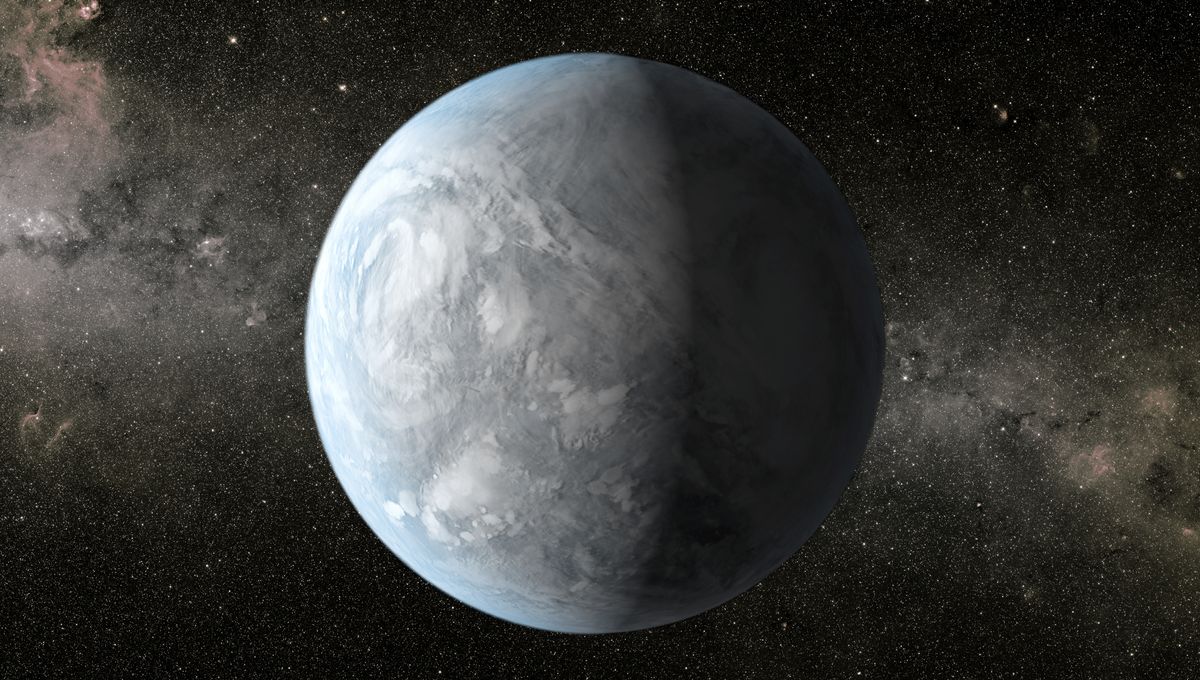
If we want to find the necessary conditions for life on the surface of another planet, let alone life itself, we should stop hoping for carbon in its atmosphere, a new paper argues. Instead, it is an absence, or at least shortage, of atmospheric carbon that could be the sign we’re getting close.
All life on Earth depends on five elements: carbon, hydrogen, oxygen, nitrogen, and phosphorus. Of these, carbon is considered particularly crucial.
Consequently, it makes sense to be on the lookout for its presence in the atmospheres of planets we think might support life beyond the Earth. However, an interdisciplinary team thinks we may have been getting it backward. Atmospheres with very little carbon might be the signals we are looking for that a planet has good prospects for life.
Water, comprising hydrogen and oxygen, is considered the other crucial ingredient to look out for, but only if it is in liquid form. Professor Julien de Wit of MIT is part of a team that suspects liquid water and atmospheric carbon don’t go well together.
“[A]ll the features that have been talked about so far [as indicators of life] have been beyond the reach of the newest observatories,” de Wit said in a statement. “Now we have a way to find out if there’s liquid water on another planet. And it’s something we can get to in the next few years.”
Planets in a particular star system will be formed with similar amounts of carbon, the authors argue. “If we see one planet with much less carbon now, it must have gone somewhere,” co-author Professor Amaury Triaud of the University of Birmingham said. Heavier elements might be trapped in a planet’s core, but carbon is too light for that. “The only process that could remove that much carbon from the atmosphere is a strong water cycle involving oceans of liquid water,” Triaud continued.
The idea runs against our intuition – carbon in an atmosphere could indicate its abundance on the surface, which is what life needs. However, a quick look at the planets on either side of us shows there might be something to it. Venus has a thick, 96.5 percent carbon dioxide atmosphere, but is certainly not hospitable to life. Between the runaway greenhouse effect the gas creates, and the acidity it produces, carbon dioxide is most of the problem.
On the other side, Mars’ biggest obstacle to life may be how thin its atmosphere is, but what it has is mostly carbon dioxide, so it’s not like there’s no carbon signal there to find.
Meanwhile, until humans entered the picture, the concentrations of carbon dioxide and methane in Earth’s atmosphere were quite low. Some of the missing carbon was lurking in the bodies of living things. The authors note: “Biology—as we know it—does not just produce chemicals, it also consumes them.” There is also plenty dissolved in the oceans and deposited on the sea floor, where it eventually turns to rock. This, the authors mention, approximately matches the amount in Venus’s atmosphere.
“We believe if we detect carbon depletion, it has a good chance of being a strong sign of liquid water and/or life,” de Wit said. On the other hand, too much carbon dioxide would be what the team calls an anti-biosignature.
Knowing this is little use if we can’t detect a planet’s atmospheric carbon levels, but that’s something the JWST and forthcoming telescopes are increasingly able to do, particularly for planets that transit their star from our location. “Carbon dioxide is a very strong observer in the infrared, and can be easily detected in the atmospheres of exoplanets,” de Wit explained. The authors suggest combining data from ten transits should be sufficient for planets around the nearer stars.
If a solo planet has little atmospheric carbon, it might be attributed to a quirk of the cloud from which the system formed. However, where the atmosphere of more than one planet can be compared, as scientists hope to do with TRAPPIST-1, discrepancies could be very suggestive.
However, while such a shortage of CO2 might indicate potential for life, it would not be proof it had evolved. For that, other biosignatures are required, and the team suggests ozone should be the priority. Ozone would indicate the constant replenishment of the atmosphere with molecular oxygen, which is hard to explain without widespread photosynthesizing life. On the other hand, O2 molecules, while far more abundant in Earth’s atmosphere, emit radiation in a much noisier part of the spectrum.
The study is published in Nature Astronomy.
Source Link: We May Have Been Looking For The Wrong Thing In The Search For Life